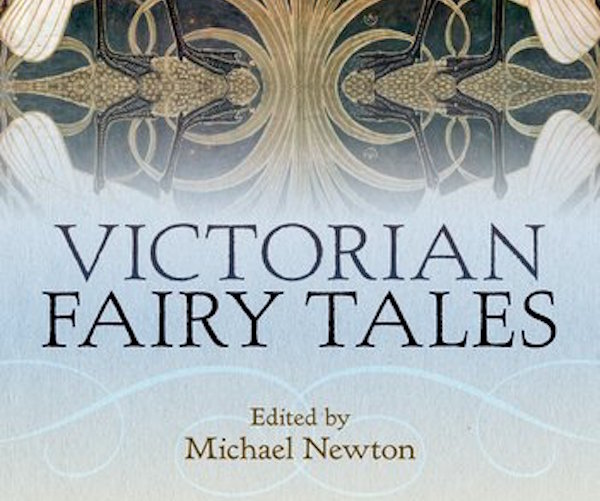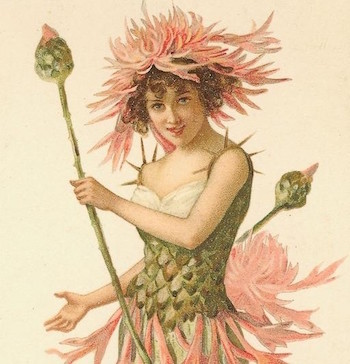Book Review: Victorian Fairy Tales—Sprites Against Realism
What seems to animate many of the fairy tales is a heady freedom from the constraints of realism, the style we associate most strongly with Victorian fiction.
Victorian Fairy Tales, ed. Michael Newton. Oxford University Press, 544 pages, $27.95.

By Susan de Sola Rodstein
If we understand a fairy tale to be a folk story of the marvelous collected from a provincial, timeless tradition, the title of this anthology seems a contradiction. Michael Newton has selected a range of fairy tales (not necessarily including a fairy, but at least some element of the fantastic) written by leading 19th-century authors, such as John Ruskin, William Makepeace Thackeray, Oscar Wilde, and Rudyard Kipling. The Victorian period was marked by the appearance in English of collections by Grimm, Anderson, Perrault, and others, prompting efforts to collect indigenous tales by anthologists such as Joseph Jacobs. Although the moral influence of fairy tales upon children, their presumed but not exclusive audience, was under debate, they nevertheless became not only a cornerstone of childhood, but a fundamental part of the vocabulary of Victorian culture.
Although some of the authors here, such as Kenneth Grahame and Edith Nesbit, largely wrote for children, fairy tales were also a viable “market” for authors who wrote in other genres and for other audiences. The first story, Robert Southey’s “The Story of the Three Bears,” is a rare instance of a folktale that can be largely traced to a single author, who, if he did not wholly invent it, popularized it. The rest are what we would call self-conscious literary fictions. The volume, as Newton puts it, contains not fairy tales, but “literary imitations of a literary response to an anyway historicized oral narrative.” We might think of the collection as “Victorian Literary Fairy Tales.” What does it mean for a sophisticated writer to take up the conventions of a “simple” oral folk genre?
Newton’s interesting Introduction examines myriad aspects of fairy tales, both their collection and their influence in the 19th century, from their role in national mythmaking to their affinities with ideas of the primitive and evolution (ideas of childhood as the childhood of the race) to changing gender roles and to the tensions between paganism and piety. In a century dominated by great leaps in industrialization, urbanization, and secularization, the fairy tale perhaps betrayed a yearning for a timeless, pre-industrial world, often under an absolute monarch. He alerts us to the possible links between fairy tales and late 19th-century interests such as theosophy, spiritualism, parapsychology, and Indian religion. He also raises the topical interpretation of fairy tales in terms of social conditions and political conflicts, as in the social radicalism of Ruskin’s “The King of the Golden River.”
Although the signal phrase we associate with fairy tales is “once upon a time”—a timeless place, not in history—Newton concedes that these stories are “solidly historical; the ahistorical world they concoct reads like a mirrored nineteenth-century England.” Wilde’s tale, “The Selfish Giant,” with its sentimentalism and transparent Christian allegory, is a particularly conventional offering. “Prince Prigio,” by Andrew Lang, himself an important authority on fairy tales, despite seeming to reference almost all known fairy tale conventions, reads like a solidly Victorian morality lesson on the vital importance of not seeming too clever.
What seems to animate many of the tales is a heady freedom from the constraints of realism, the style we associate most strongly with Victorian fiction. But whether, as Newton asserts, this results in “some of the most vivid, most astonishing, and most entertaining writing of the century” seems questionable. Several of the tales run to up to 40 pages or more, reading more like rather shapeless novellas or long short stories than tales. Some (Thackeray, George MacDonald, Grahame) are a slog, as if the release from “rules” of causality and character development leads to an accretion of arbitrary events and reversals, but over a fatiguing length.
Reading the representative sampling of English fairy tales collected by Joseph Jacobs (English Fairy Tales, 1890), one is struck by how often extreme stupidity is the mover of the tale (“Mr. Vinegar” and “The Three Sillies” to name only two), and how this idiocy is paired with compensatory magic, as if one supplies the deficiencies of the other. Magic also supplies shortcuts to complete impossible tasks, such as clearing forests, often assigned by flawed monarchs or cannibalistic giants. It secures release from captivity and threats. It accrues material fortunes and confers supernatural virtues, such as powers of attraction or strength. What is therefore elided is skill, application, discipline, development—what we might call the virtues of the ever-rising middle classes. Nothing could be less conventionally Victorian. The very motors of fictional realism are suspended.

Victorian illustration of a Fairy—the fairy tale perhaps betrayed a yearning for a timeless, pre-industrial world.
It is no wonder, then, that the most common approach to the fairy tale here is a humorous one. The response to the well-known conventions of the fairy tale often takes the form of pastiche (as in Thackeray, Lang, Grahame, and Nesbit) and efforts at humorous twists (some of which fall flat to modern ears). Ford Madox Ford’s early story, “The Queen That Flew” is a delightful turn on “gatlessness” (stupidity) in the naiveté of its reluctant Queen. (Poignantly, the ability to fly is one of the most common magical abilities in these stories, while the first airplanes are just decades away, yet still implausible.) Nesbit’s “Melisande” is just right; another humorous twist on fairy tale conventions, but with a light touch that doesn’t get in the way of the story.
But the best surprises here are some of the tales by authors less-often read today, such as Dinah Mulock Craik’s (a best-selling author in her day) touching “The Little Lame Prince and His Travelling Cloak: A Parable for Young and Old,” and Mary de Morgan’s “The Wanderings of Arasmon,” both of which pointedly eschew a happy, or “fairy tale” ending. Laurence Housman’s “The Story of the Herons,” is another memorable story, in which the beast tale is transformed into a moving sacrifice, of giving up part of one’s nature for love.
In a magical fictional world where nearly anything is possible, what the authors choose to make possible cannot help but supply a revealing window into a vanished time. Even if every story here is not equally compelling, the collection as a whole provides a valuable scholarly resource. In addition to Newton’s Introduction, the book includes scholarly notes on the texts, samples of illustrations—a crucial part of the popularity and popularization of the fairy tale—a select bibliography, and a chronology of the literary fairy tale (from the 1705 Grub Street translation of Arabian Nights’ Entertainments to 1914 and the beginning of the First World War). Newton includes samples from Grimm and Anderson by way of prologue. The appendix includes Ruskin’s “Introduction” (“What is a Fairy Tale?”) to German Popular Tales, Juliana Horatia Ewing’s “Preface” to Old-Fashioned Fairy Tales, George MacDonald’s essay “The Fantastic Imagination,” and Laurence Housman’s “Introduction” to Gammer Grethel’s Fairy Tales.
Susan de Sola Rodstein holds a PhD in English and American literature from The Johns Hopkins University. As Susan de Sola, her poems have appeared in The Hudson Review, The Hopkins Review, Measure, River Styx, and Ambit, among many other venues. A David Reid Poetry Translation Prize winner, she lives near Amsterdam with her family.
Tagged: English, fairy tales, Michael Newton, Oxford University Press, Susan de Sola Rodstein, Victorian Fairy Tales

